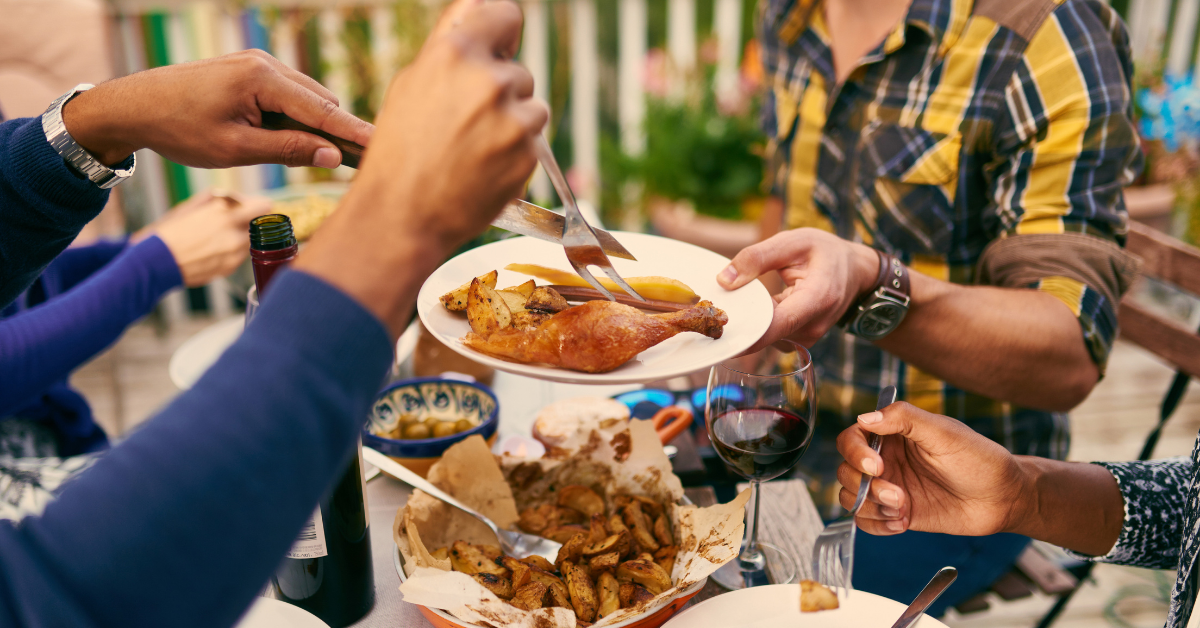
In what has been an exceptionally tough year, Thanksgiving sounds cathartic. A full day designed for being grateful alongside those you love and a plateful of comfort food is a wonderful way to battle COVID-19 stress.
While we’d like to launch headlong into a turkey coma (more on that later) and forget all about the pandemic, we’d be remiss not to mention what it will take to create a safe Thanksgiving in 2020.
The doctors of Tryon Medical Partners are here to give you a well-rounded meal of Thanksgiving tips. Planning how to celebrate Thanksgiving safely during COVID-19 – those are like the vegetables. Maybe not your absolute favorite but necessary for success. The fun facts and recipe suggestions – those are like the delicious gravy and desserts. We have those, too.
So keep reading to get all your servings of Thanksgiving tips from the doctors at Tryon:
1. Limit Your Exposure
In efforts to reduce exposure to germs, it is safest to think about staying home this holiday season, or close to home, especially if you or any family members have underlying health conditions.
“Spending the holidays with those you’ve already been seeing throughout the pandemic, who may be part of your ‘bubble,’ is the safest bet,“ said Dr. Reshma Vora, an internal medicine physician at Tryon. “If you must travel, choose to drive instead of fly. If you need to stop at a restroom when on the road, be sure to wear your mask and get in and out as soon as possible, and then use hand sanitizer.”
2. Even Gastroenterologists Wave the White Flag
“Growing up in the South, Thanksgiving is the holiday of the year,” said Tryon Gastroenterologist Dr. Eric Hilgenfeldt. “It is pretty hard to adhere to a strict calorie or macronutrient-restricted diet when it comes to a traditional Thanksgiving dinner. I tend to wave the white flag on the holidays and this one in particular.”
For patients who do have gastrointestinal illnesses that prohibit them from consuming large quantities or have food restrictions (dairy, gluten), the same modifications they make in their daily lives will need to be adapted to this holiday meal.
“The good thing about Thanksgiving is that food usually fills the table so there is always something you will be able to eat and still be part of the meal,” Dr. Hilgenfeldt said. “However, anticipation is always important, and bringing your own recipe would be more than appropriate and can even be shared with others.”
3. Gluten-Free Stuffing MAY Beat the Original
As someone with Celiac Disease, the holidays can be a challenging time to ‘find something I can eat,’ particularly at parties and gatherings,” said Dr. Anne Barnard, an internal medicine physician at Tryon.
Turkey with stuffing is often the centerpiece of the Thanksgiving table. Cornbread dressing can easily be made gluten-free (GF), with a GF cornbread recipe/mix and GF bread.
“Since GF bread tends to be slightly dry and more porous than regular white/wheat bread, it is perfectly suited to go into the stuffing, as it readily absorbs the broth and seasonings,” Dr. Barnard said. “I promise you will never know the difference!”
The truth is, it is not that difficult to recreate favorite holiday foods with a few key substitutions, Dr. Barnard shares. For example, instead of regular flour, one can substitute (one-to-one ratio) almond, quinoa or rice flour. These are now readily found at any grocery store or on Amazon, which Dr. Barnard says has been her go-to during quarantine. This means those who eat gluten-free can still enjoy gravy, casseroles and dessert.
One of Dr. Barnard’s favorite recipes is for a gluten-free crust that she says is equally delicious for pumpkin pie as it is for quiche. Add Dr. Barnard’s crust recipe to your cookbook.
4. You Don’t Necessarily Need Turkey to Get That Good Nap
Everyone always blames the turkey for why they feel sleepy after their Thanksgiving meal, but it probably has more to do with the actual amount of food consumed, and the carbohydrate-heavy side dishes and dessert, instead.
“The lull of a big meal, combined with sitting around watching football or playing board games is generally what can be to blame for making you feel tired,” Sleep Medicine Specialist Dr. Ehrlich Tan said.
The truth is that turkey does contain the amino acid tryptophan, a building block for serotonin (that affects mood) and melatonin (that affects sleep cycles). However, turkey does not contain higher levels of tryptophan than other meats and we don’t talk about those making us feel drowsy when we regularly eat them. So even if you’re a vegetarian, a big Thanksgiving plate is still going to help result in that post-indulgence nap we likely all could use.
5. Enjoy Thanksgiving Al Fresco
With coronavirus easily transmitted through the air, it is safer to socialize outside instead of in enclosed spaces, including the Thanksgiving celebration. If you must bring it inside, plan to wear masks and have hand sanitizer readily available.
When setting up seating for the meal, keep chairs six feet apart since you won’t be able to wear masks while dining. Avoid passing around dishes or having a buffet, instead designating one person to plate and serve the food to limit the number of people touching a serving spoon. For commonly shared items like salt and pepper or a butter knife, sanitize your hands after touching.
No matter how your Thanksgiving celebration comes together this year, the most important part is to remember all the things we have to be grateful for, even in this stressful time. From all the physicians and team members at Tryon Medical Partners, have a wonderful Thanksgiving filled with love, appreciation and a big plate of your favorite dishes.
